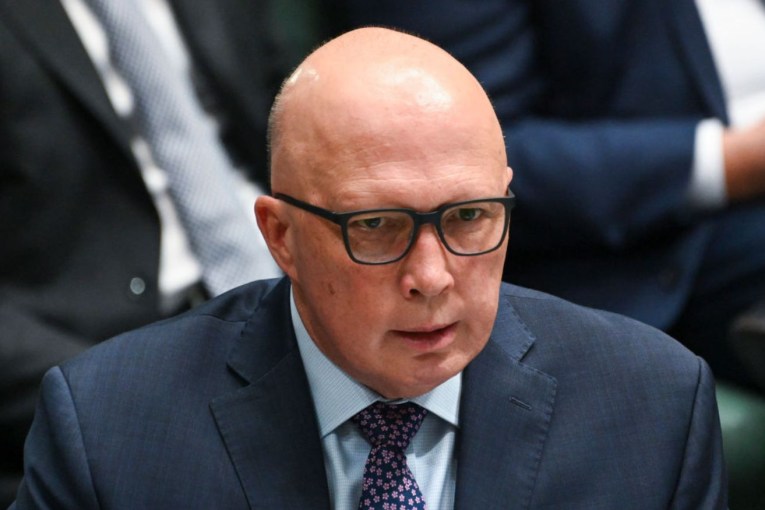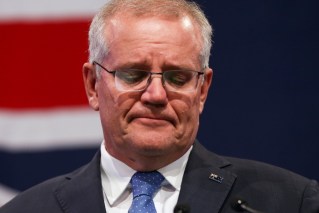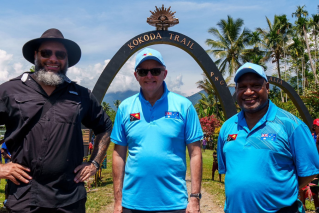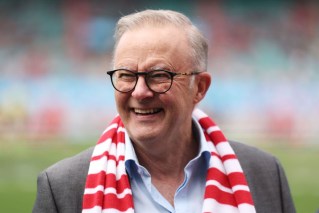Five questions Peter Dutton needs to answer about the Coalition’s nuclear plan

Source: ABC News
The Coalition’s push for a nuclear solution to Australia’s net-zero transition has left many questions unanswered, as Opposition Leader Peter Dutton and his shadow ministry seemingly struggle with the facts, economics and reality of adopting nuclear power.
Where is the detail?
Prime Minister Anthony Albanese has challenged Dutton to give a policy-explaining speech at the National Press Club, as the Coalition offers scant details on exactly how his pitch for a nuclear-led energy solution would even work.
Dutton famously sunk the Voice referendum because, he claimed, there was no detail.
Angus Taylor, the shadow treasurer, said on Wednesday that he isn’t “going to front run the detail of the policy”, as other members of the shadow cabinet offer competing timelines on how fast nuclear energy can be achieved.
Why can’t MPs agree on a timeline?
Coalition leaders have pushed the idea that Australia could have nuclear reactors within 10 years, pointing to the United Arab Emirates after the emir of Abu Dhabi, Mohamed bin Zayed Al Nahyan, announced plans to build four nuclear reactors in 2008.
“The UAE, they are the most recent entrant,” Ted O’Brien, the Coalition’s shadow energy minister, told the ABC’s 7.30 program this week.
“When you look at the inclusion of Covid, which took them out for two years, they went from having a decision to actually having nuclear on the grid within a 10-year period,” he said.
That claim, even with O’Brien taking two years off the top, doesn’t stand up to scrutiny.
No Western country has matched the speed of the UAE’s adoption because the monarchy didn’t require parliamentary approval, legislation passed or the creation of necessary regulation, as explained by economist John Quiggin.
The UAE announced its intention to add nuclear energy to the country’s grid in April 2008 and the first of four reactors at Barakah Nuclear Power Plant didn’t enter commercial operation until April 2021.
The final reactor is set to become active this year, 16 years after the project was announced.
Jane Hume, shadow minister for finance, didn’t get the memo, falsely claiming on Sky News that the UAE had “nuclear reactors up within three years.”
“We’d now be looking at these small modular reactors as well as traditional reactors,” she said.
“Ted O’Brien raised the UAE, which had nuclear reactors after three years.”
It takes an average of 9.4 years to build a nuclear reactor, but that timeline does not factor in the removal of Australia’s legislative ban, finding and approving sites and developing the required industry.
Source: 7:30
How does it make economic sense?
Britain’s Hinkley Point Nuclear Power Station was originally projected to cost $11.8 billion in October 2013, but that figure has ballooned to nearly $90 billion by the time it is slated to open in 2026.
Australia’s energy department projected the cost to replace retiring coal-fired power stations – as proposed by the Coalition – with nuclear energy will cost $387 billion.
Renewable energy is far cheaper than nuclear energy by any measurement, before accounting for the cost of creating an industry from scratch or building plants.
According to a CSIRO report, “nuclear power does not currently provide an economically competitive solution in Australia”.
It found that wind and solar cost an average of $112 per megawatt hour in 2023, decreasing to just $82 in 2030.
In contrast, the small modular reactors proposed by the Coalition cost an average of $509 an hour in 2023, dropping to $282 in 2030.
Why disagree with the experts?
Dutton claimed that the CISRO’s report on the costings of nuclear energy has been “discredited” and is not “a genuine piece of work,” but did not explain why.
Tweet from @strangerous10
Other research, however, has agreed that nuclear will be too slow and expensive to play any serious role in Australia’s net-zero transition.
Where will the reactors come from?
The Coalition has touted small modular reactors as a solution to fast-track nuclear development, but they aren’t a commercially available technology.
A reactor that was previously hailed by O’Brien, made by NuScale Power, has dropped its plans to build its facility in Idaho, United States.
China and Russia are making strides in the technology, but if Dutton plans on buying them from either, it will raise some serious questions.








